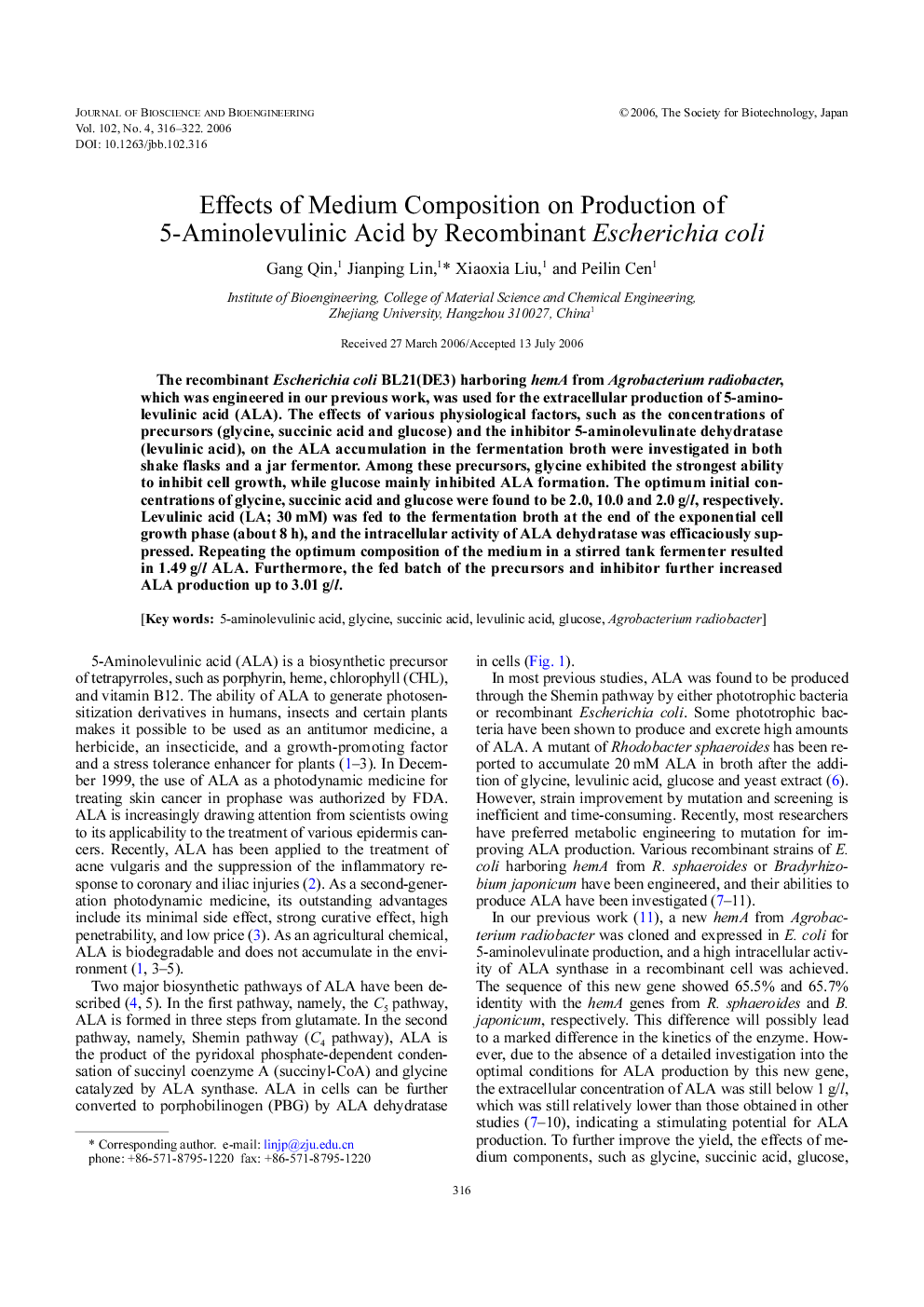| Article ID | Journal | Published Year | Pages | File Type |
|---|---|---|---|---|
| 22024 | Journal of Bioscience and Bioengineering | 2006 | 7 Pages |
The recombinant Escherichia coli BL21(DE3) harboring hemA from Agrobacterium radiobacter, which was engineered in our previous work, was used for the extracellular production of 5-aminolevulinic acid (ALA). The effects of various physiological factors, such as the concentrations of precursors (glycine, succinic acid and glucose) and the inhibitor 5-aminolevulinate dehydratase (levulinic acid), on the ALA accumulation in the fermentation broth were investigated in both shake flasks and a jar fermentor. Among these precursors, glycine exhibited the strongest ability to inhibit cell growth, while glucose mainly inhibited ALA formation. The optimum initial concentrations of glycine, succinic acid and glucose were found to be 2.0, 10.0 and 2.0 g/l, respectively. Levulinic acid (LA; 30 mM) was fed to the fermentation broth at the end of the exponential cell growth phase (about 8 h), and the intracellular activity of ALA dehydratase was efficaciously suppressed. Repeating the optimum composition of the medium in a stirred tank fermenter resulted in 1.49 g/l ALA. Furthermore, the fed batch of the precursors and inhibitor further increased ALA production up to 3.01 g/l.
